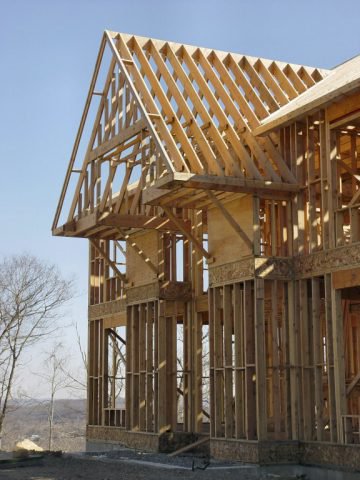The property market is predicted to stay static or worsen this year, with the slight developments in the economy yet to hit the housing sector.
Thousands of people have now joined the buy-to-let market, a sector that is really thriving.
Average rents have increased by 13.6% since 2009, say the property listings website Rightmove. They also expect a further 2% growth this year around the country.
The amount of renters in the UK has also risen, from 31% to 36% in the past decade, reveals the latest Census results. There is now a high demand for rental accommodation, especially in big cities, for example, Westminster, where four out of ten properties are privately rented.
It is not surprising then that many investors have turned to this market.
Property mogul Sarah Beeny has a wide portfolio of properties, while presenter Konnie Huq sticks to the London market. Actress Fiona Fullerton has rental houses in the Cotswolds, and sportsman Tim Henman also invests in southwest London and across Europe.
Three of Britain’s famous property professionals have delved into the buy-to-let market, all becoming landlords. They all invest in different types of property, and earn strong rewards.
Phil Spencer has presented Location, Location, Location, and also hosts Channel 4’s The Common Denominator. He advises buying within a familiar area and knowing the type of tenant that you want. He says: “If you understand the housing market where you live, you are likely to make a more informed decision than if you were trying to buy 150 miles away.
“Then decide what type of person you want to rent your property: students, young professionals, couples or families? What do they look for? How much will they pay? How will they travel to work?”
Phil has chosen to target young professionals through his portfolio. “Several hundred thousand graduates arrive in London each year for their first jobs. They have lived with friends during university and usually wish to continue doing so,” he explains.
He adds: “This is why I have bought three-bedroom Victorian houses. I convert one room to get a fourth bedroom and let to four sharers.”1

Why Buy-to-Let Still Delivers
Within London, over 45% of households are renters. LSL Property Services claim that the average London rent increased by 0.9% in October, to a monthly value of £1,102 for a two-bedroom house.
Letting agents also say that landlords receive an average 7% annual rental yield. Savills estate agents also predict that rents in London will increase by 26.4% in the next five years.
Channel 4 presenter of You Deserve This House, Amanda Lamb, also rents out a flat in London, although she also looks abroad for investments, including her two-bedroom flat in southern Italy.
“There are plenty of bargains overseas right now,” says Amanda. “You can buy cheaply in perennially popular holiday destinations.
“I suggest the Algarve in Portugal. It is easy to get to, and popular with golfers and families. The market is consistent, but the area isn’t overdeveloped. France is also an enduring and easy-to-get-to favourite with British holiday makers.
“However, my hot tip is Florida. There are fantastic bargains around Orlando, Kissimmee, and Miami for £160,000 to £250,000. The rental market is strong too.”
Properties overseas should be near an international airport, and always guarantee that there will be flights from the UK in the long-term.
Amanda doesn’t advise letting out in Spain, due to a stagnant housing market and damaged economy. She warns: “You can buy a bargain, but there will be 300 similar properties nearby all looking for tenants. This is because their owners can’t sell. Buying there could backfire.”1
Globalpropertyguide.com monitors the world’s housing markets, and agrees with Amanda about Florida’s appeal. They claim that house prices, sales figures and construction volumes are increasing across the USA. Florida, Texas, parts of California, and New York are the strongest markets.
TV builder Tommy Walsh is a landlord duo with his partner. “We acquired our first buy-to-let 25 years ago,” he says. “My wife, Marie, and I have always seen it as a good investment.”
With Tommy’s keen construction skills, he is more likely to gain capital appreciation when his properties are sold. They also make impressive yields whilst in the rental market. Refurbished, modern houses will be snapped up quicker and for higher rents, than older properties.
He advises those thinking of following in his steps: “Avoid buildings with major structural defects, unless you are an experienced builder with deep pockets.”
Tommy and Marie also manage their properties by themselves, without the help of a letting agency.
He says: “We prefer to select the tenants and arrange the contracts ourselves, as it is more cost effective. Obviously, building and maintenance isn’t a problem. And my wife organises the paperwork and tenants.
“References must be thorough, including credit checks and finding guarantors, if needed. We insist rent is paid by direct debit on the due date with cleared funds. Deposits are returned only when all contractual requirements are met.
“We always redecorate and clean or replace carpets after a long tenancy. We video the property’s condition at the handover as well as creating a paper inventory.”
He adds: “We tend to charge a little less than the going rate.” This allows for a wide range of tenants, who may then enter longer tenancy agreements, which provides financial stability.”1
Deciding to manage properties by yourself can save lots of money on letting agent fees, says the Royal Institute of Chartered Surveyors (RICS).
If landlords have the right attitude towards the market, then they could make buy-to-let a worthy investment this year. Areas to look to are:
Top 10 buy-to-let areas in 2013
- London: Victoria/Pimlico
- Maidenhead
- Exeter
- Cambridge
- Bristol
- Milton Keynes
- Inverness
- Aberdeen
- London: Canary Wharf
- Central Manchester
Tips for inspiring landlords
- Choose your tenants: students, young professionals, couples or retirees?
- Buy in winter: prices may go low.
- Don’t buy in a large scheme: 75% of properties will be to let.
- Select areas with a variety of employment options and good transport services, for example, Reading or Southampton.
- Choose a good mortgage, or remortgage your residential property if it could work out cheaper.
- Many buy-to-let mortgages require at least a 25% deposit, although some want 40%.
- Tenants consider ground-floor flats a security risk.
- If looking for a family house, consider good school catchment areas.
- You should aim for a 5% annual yield.
- If you choose a letting agency, use one that is registered with the Association of Residential Letting Agents (ARLA).
1 http://www.landlordexpert.co.uk/2013/01/15/why-buy-to-let-continues-to-deliver/








